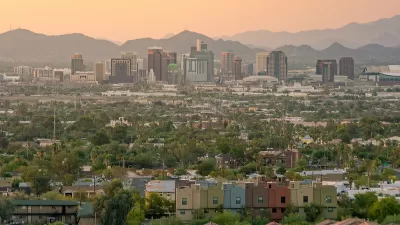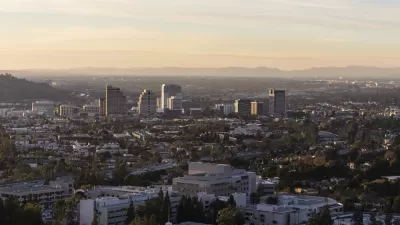The United State Conference of Mayors recently released a report projecting moderate growth for almost all of the country’s metropolitan areas. A survey of coverage on the report reveals multiple readings of the state of the economy.
The coverage of the new report included a long article from Wendell Cox breaking down the projected population growth of metropolitan areas in southern and western regions of the country. Cox especially seizes on the projected increase in the number of megacities in the country: “Chicago, Dallas-Fort Worth, and Houston are projected to join megacities New York and Los Angeles as their metropolitan area populations rise above 10 million. At the projected growth rates, Atlanta, Miami, Phoenix, and Riverside-San Bernardino could pass the threshold by 2060.” In addition, “USCM anticipates that the number of major metropolitan areas – those over 1,000,000 population –- will rise from 51 in 2012 to 70 in 2042.”
William Selway took an optimistic look at the economic growth predicted by the report, quoting Mayor Scott Smith of Mesa, Arizona, president of the USCM: “We’re in the real recovery, not just the recovery that economists talk about…We see light at the end of the tunnel.”
Jeffrey Sparshot produced a more measured reading of the report, also quoting Mayor Smith, but with a more reserved soundbite: ““This is nothing to jump up and down about…The good news is that it doesn’t seem like there’s bad news. It looks like we’ve bottomed out, with a slow but increasingly positive economy.”
FULL STORY: Moving South and West? Metropolitan America in 2012

Alabama: Trump Terminates Settlements for Black Communities Harmed By Raw Sewage
Trump deemed the landmark civil rights agreement “illegal DEI and environmental justice policy.”

Planetizen Federal Action Tracker
A weekly monitor of how Trump’s orders and actions are impacting planners and planning in America.

Why Should We Subsidize Public Transportation?
Many public transit agencies face financial stress due to rising costs, declining fare revenue, and declining subsidies. Transit advocates must provide a strong business case for increasing public transit funding.

Understanding Road Diets
An explainer from Momentum highlights the advantages of reducing vehicle lanes in favor of more bike, transit, and pedestrian infrastructure.

New California Law Regulates Warehouse Pollution
A new law tightens building and emissions regulations for large distribution warehouses to mitigate air pollution and traffic in surrounding communities.

Phoenix Announces Opening Date for Light Rail Extension
The South Central extension will connect South Phoenix to downtown and other major hubs starting on June 7.
Urban Design for Planners 1: Software Tools
This six-course series explores essential urban design concepts using open source software and equips planners with the tools they need to participate fully in the urban design process.
Planning for Universal Design
Learn the tools for implementing Universal Design in planning regulations.
Caltrans
Smith Gee Studio
Institute for Housing and Urban Development Studies (IHS)
City of Grandview
Harvard GSD Executive Education
Toledo-Lucas County Plan Commissions
Salt Lake City
NYU Wagner Graduate School of Public Service





























